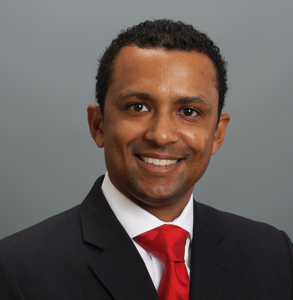Camell Branch-Selby, VP of Account Management and Service Delivery – and President, National Black Employees Association Employee Resource Group, Xerox
By Rafael Canton
After a year when the social justice movement in the U.S. has spurred new demands for change in our society, the advancement of diversity and inclusion (D&I) in the workplace has become a more urgent priority in corporate America than ever before. Some basic statistics clearly tell us why. While 64% of entry-level positions are held by white employees, the number jumps to 85% as we go further up the corporate ranks, according to human resources company Mercer.
For companies like Xerox, D&I isn’t only a moral imperative; it also has an impact on the bottom line. In fact, D&I measures help companies ensure they remain competitive and are positioned to thrive in an increasingly dynamic, and troubled, global economy. A study from the workplace culture company Great Place to Work found that S&P 500 companies that prioritized D&I during and after the 2009 recession experienced a 14% gain in revenue.
So how can we change the numbers? Widening the communities from which we recruit talent is an important step. And mentorship is critical to fostering diverse hiring practices and career advancement.
Seizing career opportunities
Camell Branch-Selby, Xerox Vice President of Account Management and Service Delivery – and President of the company’s National Black Employees Association Employee Resource Group – knows this first-hand. Mentorship has played a vital role throughout her 25-year career, helping her navigate the opportunities and challenges.
“It’s a mentor who looks at you and says, ‘Here’s an opportunity that you have, and here’s something you’re missing,’” says Branch-Selby. “The best mentorship relationships result in what I call an internal reckoning. That moment where you realize, ‘I missed this.’ Without mentors, I certainly wouldn’t be here.”

Kamonte McCray, SVP and GM, Content Management and Workflow Software Group, Xerox
But mentorship is not a one-way street. Kamonte McCray, Senior Vice President and General Manager for Xerox’s Content Management and Workflow Software Group, knows from his own experience that both a mentor and a mentee must contribute actively to build a fruitful relationship. Over the years, he has benefitted from others’ counsel while offering his advice to a new generation of employees. “A successful mentorship is based on a shared commitment,” says McCray. “If as a mentee, your mentor gives you a task, then you need to complete it. And as a mentor, you have to be available.”
Sometimes it means having uncomfortable but necessary conversations. McCray remembers speaking with a Xerox executive about pursuing his MBA. After telling the executive he had been thinking about getting an MBA for six years, the executive pushed back on McCray to decide. “It was powerful,” McCray recalls. “And guess what, I did [earn my MBA]. And I’ve had subsequent conversations with two other people, one of whom now has his MBA and the other who is getting ready to complete it.”

Kristen Palmer, Intern, Xerox
Kristen Palmer, who recently interned at Xerox, experienced the benefits of mentorship at the very beginning of her career. After conversations with her mentors, Palmer, an MIT sophomore and alum of A Better Chance, a non-profit dedicated to advancing opportunities for young people of color, realized the importance of expanding her skillset. As a result, she chose to intern with both the web development and automation teams at Xerox. “Leaders I’ve spoken to have told me many people in tech often stay within tech and don’t branch out as much,” says Palmer. “I know building a broader set of skills, including soft skills, will be useful as I start my career.”
Accelerating change
Though many companies have implemented D&I initiatives over the years, lasting change has yet to be achieved. That’s why, in November 2020, Xerox launched a program with A Better Chance. The objective: to help develop a pipeline of candidates pursuing careers in STEM.
Such targeted initiatives can help companies strengthen and accelerate their progress, with the understanding that change must be structural and deep within the organization. “We cannot continue to walk in a circle,” Branch-Selby says. “There has to be a point where it’s more than just words, and if it’s not now, then when?”


